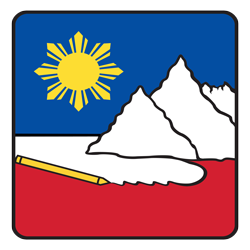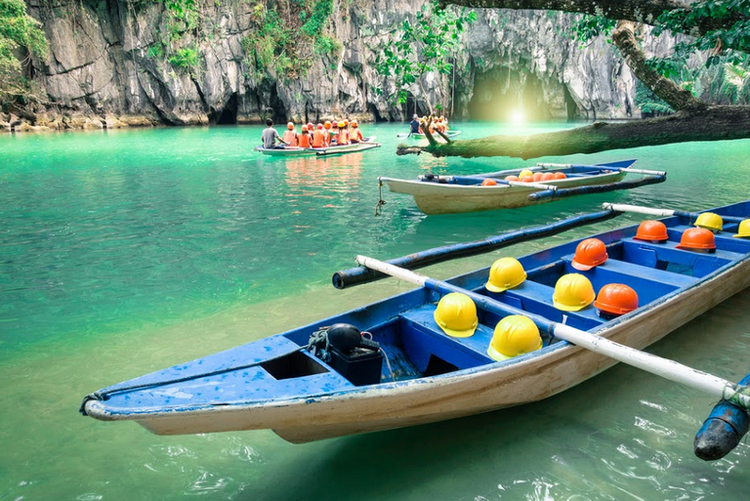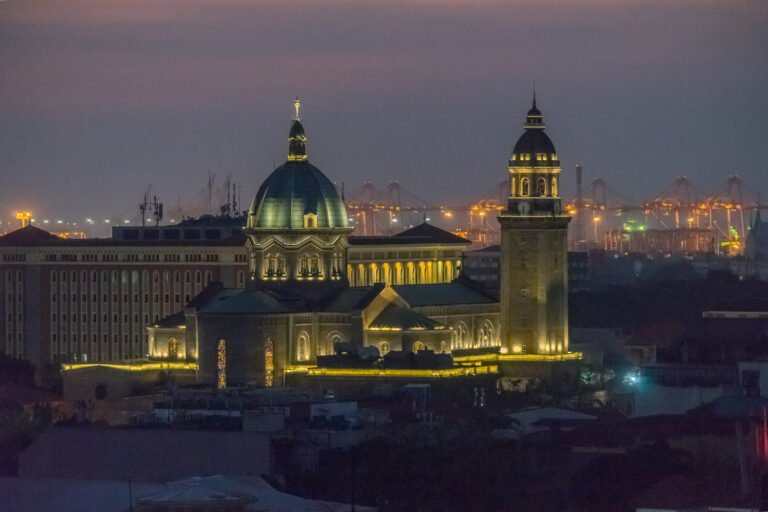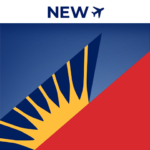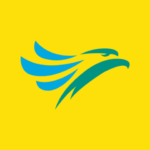Philippines SIM Cards and Mobile Data Guide for Tourists and Travelers
Staying connected in the Philippines is essential for navigating with Google Maps, booking Grab rides around Metro Manila, and staying in touch with loved ones. Getting a local SIM card is surprisingly easy and affordable—much cheaper than international roaming.
This comprehensive guide covers everything you need to know about buying and using SIM cards as a tourist in the Philippines.
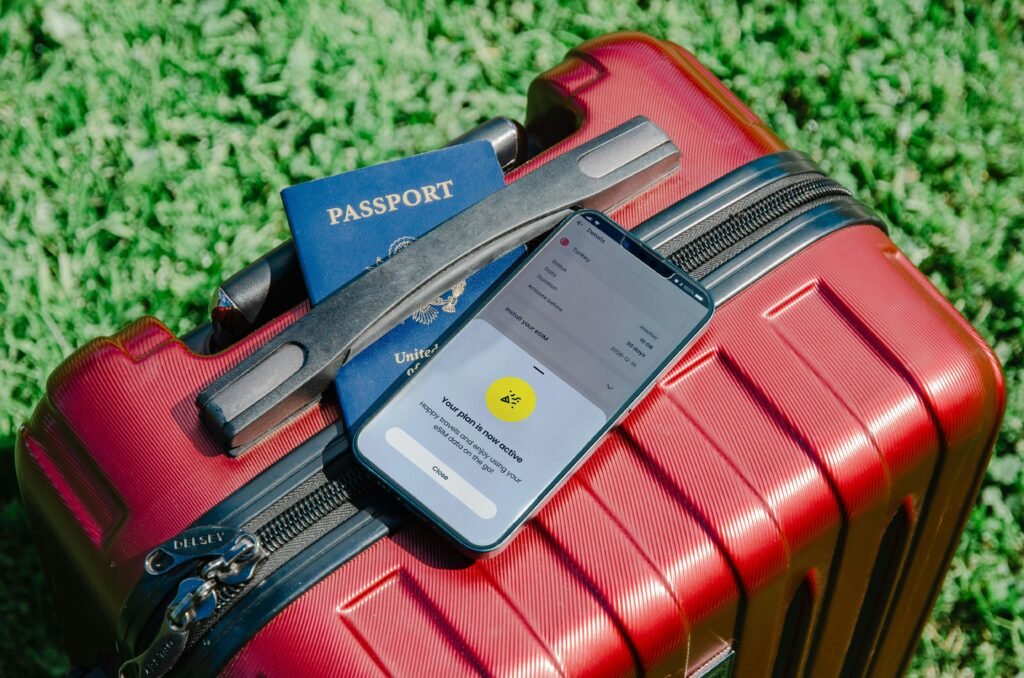
Table of Contents
Philippine Mobile Networks Comparison
The Philippines has three major mobile network providers. Understanding their strengths and weaknesses will help you choose the right one for your trip. Coverage quality can vary significantly depending on weather conditions and geographic location.
Smart Communications (PLDT) – Best Coverage Nationwide
Smart Communications, owned by PLDT (the Philippines’ largest telecommunications company), is the most popular network among locals and tourists, offering the widest 4G/LTE coverage across the Philippine archipelago.
The network performs exceptionally well in major cities like Manila, Cebu, and Davao, and maintains a decent signal even in remote island destinations like El Nido and Siargao. If you’re planning to visit multiple destinations or go island hopping, Smart is your safest bet.
The network is particularly strong in Palawan (both El Nido and Coron), Boracay, Siargao, Bohol, and throughout the Visayas and Mindanao regions. You can expect speeds of 10-30 Mbps in cities and 5-15 Mbps in rural areas, which are sufficient for navigation, social media, and video calls.
As of 2025, Smart has significantly expanded its 5G coverage to include Metro Manila, Cebu City, Davao City, Clark, Pampanga, and select areas in Baguio and Boracay. 5G speeds can reach 100-300 Mbps in optimal conditions, making it ideal for video streaming and remote work.
Popular Smart tourist plans
- 1-day unlimited data at ₱75 ($1.30)
- 7-day unlimited data at ₱249 ($4.30) – fair use policy of 2GB per day at full speed
- 30-day unlimited data with 5G at ₱749 ($13) – fair use policy of 3GB per day at full speed
TIPS: “Unlimited” plans have fair use policies. After reaching the daily cap, speeds are throttled to 256 kbps, which is still usable for messaging and basic browsing.
Globe Telecom – Best for City Travelers and Heavy Data Users
Globe offers coverage nearly identical to Smart and is considered equally reliable. Many travelers choose between Smart and Globe based on which has a better signal at their specific hotel or resort.
The network excels in Metro Manila and major tourist destinations. As of 2025, Globe also offers eSIM options for tourists with compatible devices, which is a convenient feature if you want to avoid physically swapping SIM cards.
Globe’s coverage is particularly strong in Manila, Cebu City, Baguio, Boracay, and throughout Cebu province. The network typically delivers speeds of 15-35 Mbps in urban areas and 5-12 Mbps in provincial areas. In some locations with 5G coverage, speeds can be even faster.
Globe’s 5G network in 2025 now covers major tourist areas, including Makati, BGC, Ortigas, Cebu Business Park, IT Park Lahug, and tourist zones in Boracay and Bohol. This makes it particularly attractive for business travelers and digital nomads.
Popular Globe tourist plans (2025 prices)
- 131 GB data + unlimited calls/texts at ₱2,000 ($34) for 30 days
- 200 GB data + unlimited calls/texts at ₱2,500 ($43) for 30 days
- 262 GB data + unlimited calls/texts at ₱3,000 ($51) for 30 days
TIPS: All Globe prepaid packages support 5G networks where available. Data does not roll over to the next month, so choose your plan based on actual usage. These plans do not have daily caps or throttling, making them ideal for heavy users.
DITO Telecommunity – Cheapest Data Plans for Budget Travelers
DITO is the newest player in the Philippine telecom market, launched in 2021. The network offers the cheapest data packages and impressive speeds in areas where it has coverage. However, coverage remains limited outside major cities and popular tourist routes, which is something to carefully consider before choosing DITO.
Where DITO does have coverage—mainly in Metro Manila, Cebu City, Davao, and other expanding urban centers—speeds can exceed 30 Mbps, with 5G areas reaching up to 200 Mbps. The problem is that coverage gaps are still common, especially in island destinations and rural areas between cities.
As of 2025, DITO has improved coverage in key tourist areas, including parts of Boracay, Puerto Princesa City, and Tagaytay, but remains unreliable in destinations like Sagada, Banaue, Siargao, and most of Palawan outside the capital.
Popular DITO tourist plans (2025 prices)
- Starter pack at ₱49 ($0.85) with 3 GB data, unlimited on-net calls, 100 off-net minutes, unlimited SMS for 15 days
- Weekly 10 GB at ₱299 ($5.15)
- Monthly 50 GB at ₱999 ($17)
- Monthly 100 GB at ₱1,499 ($26) – new 2025 offering
TIPS: These prices are significantly cheaper than Smart or Globe, but you need to verify coverage for your specific destinations before committing, especially if you’re visiting islands or rural areas. DITO data does not roll over between plans.
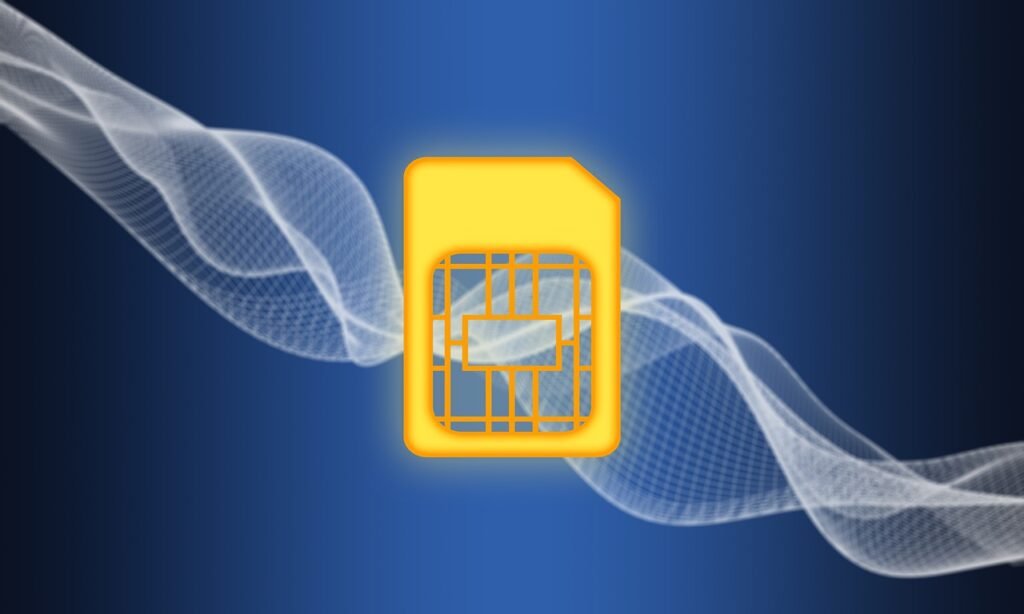
Where to Buy a SIM Card in the Philippines?
1. At Manila Airport and Other Philippine Airports
The easiest way to get connected is to buy a SIM card at the airport immediately after clearing immigration. SIM card kiosks are available at all major Philippine airports, making this the most convenient option for tourists who want to access the internet immediately.
Major airports with SIM card kiosks
- Ninoy Aquino International Airport (NAIA) Manila – Terminals 1, 2, 3, and 4. Terminal 3 has the most kiosks (located after baggage claim, before customs exit). Operating hours: 24/7 in Terminal 3, 5:00 AM to 11:00 PM in other terminals
- Mactan-Cebu International Airport – Located in the arrivals hall after baggage claim. Operating hours: 5:00 AM to midnight
- Clark International Airport (Pampanga) – Two kiosks in the arrivals area. Operating hours: 24/7
- Kalibo International Airport – For Boracay-bound tourists. Located near the exit. Operating hours: 6:00 AM to 10:00 PM
- Puerto Princesa International Airport – For Palawan tours. One kiosk in arrivals. Operating hours: 8:00 AM to 8:00 PM
Most airport kiosks operate 24/7 in major terminals, though some may have reduced hours during late-night or early-morning flights.
Airport kiosks typically charge ₱20-50 more than convenience stores (SIM cards cost ₱70-100 at airports vs ₱40-50 elsewhere), but the convenience is worth it for most tourists. You’ll be connected within minutes and can immediately use Google Maps to navigate to your hotel or install Grab, the most popular ride-hailing app in the Philippines, to book a comfortable private car directly to your destination.
TIPS: Don’t forget to bring your passport, return ticket, and hotel address—these are required for SIM registration. All SIM cards in the Philippines must be registered under the SIM Registration Act to combat fraud and spam. Unregistered SIMs will be deactivated and cannot be used. Authorized retail staff at airport kiosks will assist you with the registration and biometric verification process if needed.
2. 7-Eleven and Convenience Stores
Every 7-Eleven, Ministop, and Alfamart in the Philippines sells SIM cards from all three networks. This is the cheapest option, and these stores are everywhere in urban areas, often open 24/7. A basic SIM card costs ₱40-50, though you’ll need to purchase a data package separately.
The store staff sometimes will help you register the SIM using your passport. The process takes about 5-10 minutes. This option works well if you’re not in a rush or if you prefer to save a bit of money on the SIM card itself. Most convenience stores in tourist areas have experience helping foreign tourists with registration.
3. Smart, Globe, and DITO Branded Stores
Smart, Globe, and DITO have retail stores in major shopping malls where staff can help you choose the best plan and answer questions about coverage in specific areas. You’ll find these stores in SM Malls, Ayala Malls, Robinson’s Galleria, and other major shopping centers throughout the Philippines.
This option is best for tourists who want personalized assistance or have specific connectivity needs. The staff are knowledgeable about coverage maps and can recommend the best network based on your itinerary. They can also help troubleshoot any issues with activation or registration. Store operating hours are typically 10:00 AM to 9:00 PM daily.
SIM Card Registration Requirements for Tourists
Under the SIM Registration Act, enacted in 2023, all SIM cards must be registered before activation. The process is straightforward but mandatory. This law was implemented to reduce spam, scams, and fraud in the Philippines.
What you need to bring
- Valid passport (mandatory)
- Return ticket or proof of departure (flight booking confirmation)
- Hotel address or accommodation details (hotel name and address)
- Email address (for confirmation)
How the registration process works
Follow these steps when purchasing and registering your SIM card:
- Purchase your SIM card at the airport kiosk, convenience store, or network store
- Present your passport to the seller (mandatory for all foreign tourists)
- Provide your hotel information, including the hotel name and complete address
- Show your return ticket or flight booking confirmation as proof of departure
- Wait for registration processing – the seller will input your information into the network’s registration system (typically takes 5-10 minutes)
- Receive SMS confirmation once registration is complete – save this message as proof of registration
- SIM activation happens immediately after registration approval
- Vendor documentation – some vendors may take a photo of your passport and return ticket for their records (this is standard procedure).
TIPS: Tourist SIM cards registered with foreign passports are valid for 30 days only. If you extend your tourist visa to stay longer in the Philippines, you can extend your SIM validity by:
- In-store: Visit a Smart Store or Globe store with proof of your approved visa extension and updated passport information.
- Customer service: Contact your network provider’s customer service hotline (Smart: 888, Globe: 211) or check their official website for current extension procedures.
Submit your extension request while your SIM is still active to prevent auto-deactivation of your service.
Best Philippines Data Prepaid Plans for Tourists
Choosing the right data prepaid plan depends on how long you’re staying and how much data you’ll use. Networks often offer promotional deals, so be sure to check the current offerings when you arrive.
Best Prepaid Plans for Short Trips (3-7 Days)
Smart UNLI 5G with NON-STOP DATA – ₱249
- Unli 5G for 7 days
- Non-stop data in non-5G areas
DITO Starter Pack – ₱39
- Up to 25GB of Bonus Data
- Unlimited text to all networks
- Unlimited DITO to DITO voice and video calls.
- 100 minutes of calls to other networks.
Globe SURF4ALL99 – ₱99
- 9 GB all-access data
- 7-day validity
- No throttling – defined data limit
- Register via *143# menu
Best Prepaid Plans for Standard Vacations (1-2 Weeks)
DITO Level Up 99 – ₱99
- 9GB data allocation for 15 days
- Unli DITO to DITO Calls
- Unli text to all mobile networks
- DITO to DITO video calls
- Budget-friendly prepaid option
- Check DITO coverage in your destinations first
Smart Unli GIGA Stories 149 – ₱149
- 2GB for 7 days
- Flexible – reload multiple times as needed
- Good if you’re unsure about total data needs
TIPS: If you’re planning an extended stay in the Philippines, it’s worth browsing the current load promos directly through each network’s app or USSD menu (*123# for Smart, *143# for Globe, DITO app for DITO).
Networks frequently update their monthly data plans with better rates and bigger data allocations – you’ll find options ranging from budget-friendly 50GB plans around ₱999 to premium unlimited or high-capacity plans (200GB+) for heavy users and digital nomads.
Prices and data allowances change regularly with promotional offers, so checking when you arrive ensures you get the best current deal for your needs.
How to Load Data Plans and Add Credit or Top-up Your Philippines SIM
There are four easy ways to add credit and activate data plans or prepaid loads on your Philippine SIM card:
1. Convenience Stores (Easiest for Tourists)
Buy prepaid load cards at 7-Eleven, Ministop, and any convenience store or “sari sari store” (look for “Load na dito” signs). Available in ₱100, ₱300, ₱500, and ₱1,000 denominations. Scratch off the PIN, dial your network’s loading code, enter the PIN, and follow SMS instructions. Takes under 5 minutes.
2. Mobile Apps (Most Convenient)
Download your network’s app to browse plans, pay with international cards, and track usage:
- Smart – GigaLife app
- Globe – GlobeOne app
- DITO – DITO app
3. Digital Wallets
GCash and Maya offer 5-10% discounts on mobile load. Load your wallet with an international card, select “Buy Load,” choose your network and the desired amount, and then confirm.
4. Text Codes (Fastest)
Subscribe directly via SMS if you already have load credits:
- Smart: Text “UNLI249” to 9999 | Check balance: “STATUS” to 8080
- Globe: Text “GOSURF50” to 8080 | Check balance: “DATA STATUS” to 8080
- DITO: Use DITO app | Check balance: “DATA BAL” to 1212
All networks send SMS confirmations with plan details and expiry dates.
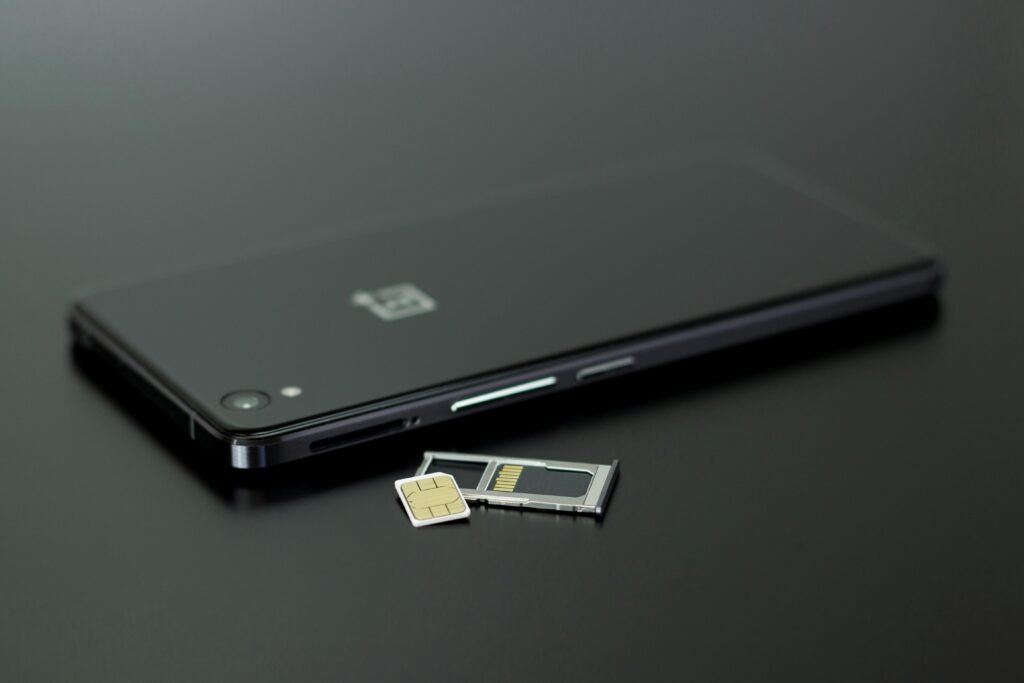
Tips for Using Mobile Data and Prepaid Load in the Philippines
Getting the most out of your data or prepaid load requires a few smart strategies, especially when traveling to areas with slower connections or exploring remote areas of the Philippines.
How to Optimize Your Data Usage in the Philippines
Filipino mobile data can be slow in rural areas, so making your data last is important. Before leaving your hotel, download offline maps on Google Maps for the areas you’ll visit. This way, you can navigate even without a data connection.
Data-saving tips
- Turn off automatic app updates and background app refresh in your phone settings
- Use data saver modes on YouTube, Netflix, and social media apps
- Download offline maps for your entire route before leaving WiFi
- Download Spotify playlists or podcasts for entertainment during travels
- Disable automatic photo/video backups to cloud services
- Monitor hotspot usage carefully if sharing with travel companions
- Use text-based messaging apps (WhatsApp, Telegram) instead of data-heavy video calls when possible
- Consider downloading content for adventure tours in advance
Many popular tourist restaurants and accommodations in destinations like Boracay, Cebu, and Manila offer WiFi speeds of 10-50 Mbps, which is perfect for backing up photos or video calling home.
Mobile Network Coverage by Popular Philippines Destinations
Coverage quality varies significantly depending on where you're traveling. Understanding which networks work best in your destinations will help you avoid connectivity frustrations.
Excellent coverage (all networks work well)
- Manila Metro area (Makati, BGC, Ortigas, Quezon City)
- Cebu City and Mactan Island
- Boracay (all beaches and inland areas)
- Baguio City and the surrounding areas
- Tagaytay and nearby tourist spots
- Puerto Princesa City
- Davao City
- Iloilo City
- Bacolod City
Good coverage (Smart and Globe recommended)
- El Nido, Palawan - some dead zones in remote beaches
- Coron, Palawan - good in town, spotty during island tours
- Siargao (General Luna, Cloud 9 area) - limited coverage in northern areas
- Bohol (Panglao, Alona Beach, Chocolate Hills area)
- Dumaguete and Negros Oriental
- Batangas beach resorts
- Subic Bay
- La Union (San Juan surf area)
- Hundred Islands, Pangasinan
Limited coverage (Smart preferred, avoid DITO)
- Remote beaches in Palawan (especially west coast areas)
- Sagada and Mountain Province areas
- Banaue Rice Terraces region
- Buscalan (Whang-Od village)
- Small islands during island-hopping tours (Caramoan, Gigantes Islands)
- Rural areas between major cities
- Batanes Islands (improving in 2025 but still limited)
- Camiguin Island (good in town areas, limited at waterfalls and remote beaches)
If you're visiting multiple destinations with varying coverage, consider buying two SIM cards (Smart + Globe) and keeping both active with minimal load. This ensures you always have backup connectivity. Total cost would be around ₱100-150 for both SIMs, plus your preferred data plans.
International Roaming and ASEAN Usage
Philippine prepaid tourist SIM cards generally do not support international roaming to nearby countries. If you’re planning side trips to Indonesia, Thailand, Malaysia, or other ASEAN nations, you’ll need to purchase local SIM cards in those countries.
However, some premium Globe postpaid plans (not available for tourists) do offer limited ASEAN roaming. If you need connectivity across multiple countries, consider international eSIM providers like Airalo or Holafly that offer multi-country plans.
What to Do If You Have Connection Issues
If you're experiencing connection problems, start by restarting your phone—this forces it to reconnect to the nearest cell tower. You can also toggle airplane mode on for 10 seconds, then turn it off, which often resolves temporary connection issues.
Quick troubleshooting steps
- Restart your phone completely (power off and on)
- Toggle airplane mode on for 10 seconds, then off
- Check if mobile data is enabled in settings
- Ensure your plan hasn't expired - check via SMS or app
- Manually select network operator in phone settings (Settings → Mobile Network → Network Operators → Search Networks → Select your carrier)
- Check network coverage maps online at network websites
- Verify plan is active by texting "BAL" to 8080 (Globe), "1515" (Smart), or "DATA BAL" to 1212 (DITO)
- Remove and reinsert the SIM card
- Check if APN settings are correct (usually automatic)
- Visit a network store if problems persist beyond 24 hours
Network Customer Service Hotlines
- Smart: 888 (toll-free from Smart numbers)
- Globe: 211 (toll-free from Globe numbers)
- DITO: 1212 (toll-free from DITO numbers)
Common Network Issues in 2025
Be aware of these common connectivity challenges:
Weather-related outages - During typhoon season (June-November), expect temporary network disruptions. Smart and Globe have backup power systems in most areas, but remote islands may lose connectivity for 24-48 hours during severe weather. Check weather forecasts before traveling.
Peak hour congestion - In tourist hotspots like Boracay and El Nido, data speeds may slow during peak evening hours (6:00 PM - 10:00 PM) when everyone is uploading photos and videos. Plan important video calls for morning hours.
Underground and enclosed areas - Signal strength may be weak in basement restaurants, some hotel rooms, and underground parking areas. Move closer to the windows or outside for better reception.
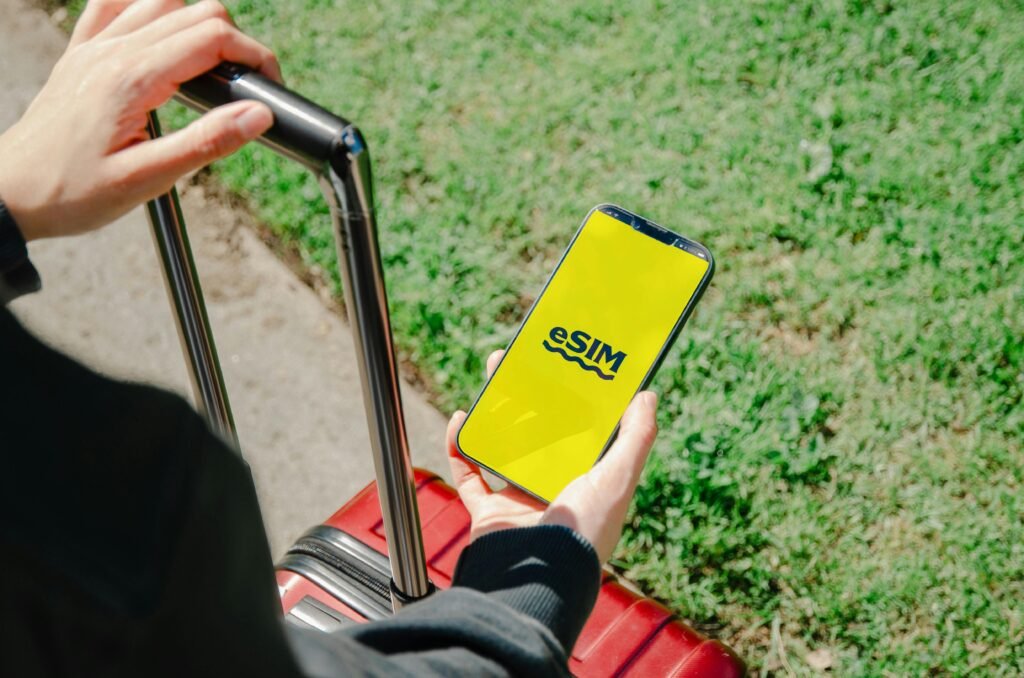
eSIM Options for the Philippines
As of 2025, both Smart and Globe offer eSIM options for tourists, which can be particularly convenient if you have an eSIM-compatible phone. DITO has announced eSIM capabilities but hasn’t rolled out tourist-friendly options yet.
Advantages of eSIM
- Activate before arriving in the Philippines (instant connectivity upon landing)
- No need to physically swap SIM cards
- Keep your home number active while using Philippine data (dual SIM functionality)
- Instant activation through QR code scan
- Cannot be lost or damaged like physical SIMs
- Environmentally friendly (no plastic waste)
- Perfect for multi-country travel
Disadvantages of eSIM
- Slightly more expensive than physical SIMs (₱100-200 premium)
- Requires an eSIM-compatible device
- Cannot be easily transferred between devices
- Some older apps may have issues detecting eSIM
How to Get A Philippine eSIM
For Globe Prepaid Traveler eSIM:
- Download the GlobeOne app before your trip (available on iOS and Android)
- Create an account using your email
- Select “Prepaid eSIM” from the menu
- Choose your plan (same data packages as physical SIM, same prices)
- Complete payment using an international credit card, PayPal, or Apple Pay
- Receive the QR code via email within 5-15 minutes
- Scan QR code in your phone’s eSIM settings (Settings → Mobile Data → Add eSIM → Scan QR Code)
- Label the eSIM as “Philippines” or “Globe”
- Activate the eSIM when you land in the Philippines by turning on the data plan
For Smart Prepaid eSIM: Smart offers a similar process through the GigaLife app. The setup is nearly identical to Globe’s process. Smart eSIM plans are available through the app or via third-party eSIM providers like Airalo and Maya Global.
Compatible devices
- iPhone: XS, XS Max, XR, and all newer models (iPhone 11, 12, 13, 14, 15, 16 series)
- Samsung: Galaxy S20, S21, S22, S23, S24 series and Z Flip/Fold series
- Google: Pixel 3, 4, 5, 6, 7, 8, 9 series
- Other compatible phones: OnePlus 9 and newer, Huawei P40 and newer, Oppo Find X3 and newer, Xiaomi 12T and newer
TIPS: Check your phone’s eSIM compatibility by going to Settings → About Phone → Digital SIM or by searching “eSIM support [your phone model]” online.
Important eSIM Setup Tips
- Purchase and set up your eSIM while connected to WiFi before your flight
- Keep your QR code email saved offline in case you need to reinstall
- Set up the eSIM, but don’t activate data until you land in the Philippines to avoid unnecessary charges
- Choose which SIM to use for data in Settings → Mobile Data (select your Philippine eSIM)
- You can keep your home SIM active for calls/texts while using a Philippine eSIM for data
Payment Methods and Digital Wallets in the Philippines
Understanding payment options will help you manage your mobile data expenses more efficiently, especially if you’re planning an extended visit.
Accepted Payment Methods for Loading
- Cash (at convenience stores, kiosks, network stores)
- International credit/debit cards (Visa, Mastercard, American Express, UnionPay)
- PayPal (Globe only)
- Apple Pay / Google Pay
- GCash (most popular local e-wallet)
- Maya (formerly PayMaya)
- Bank transfers (for larger loads)
Setting Up GCash as a Tourist
GCash is the Philippines’ leading e-wallet and offers the best rates for loading mobile data. Here’s how tourists can use it:
- Download the GCash app from App Store or Google Play
- Register using your mobile number (Philippine SIM required)
- Verify identity with passport photo
- Link an international credit card or use cash-in at 7-Eleven
- Use GCash to buy load with a 2-5% discount compared to regular rates
GCash also offers cashback promotions frequently, potentially saving you ₱50-100 on larger loads. The app is useful beyond mobile data—you can use it for Grab rides, restaurant payments, and shopping at many establishments.
Which Philippines SIM Card Should You Buy?
The right SIM card choice depends on your itinerary and priorities. Here’s how to decide based on your travel style and specific destinations across the Philippines.
Choose Smart if you’re:
- Visiting multiple destinations, including islands and rural areas
- Island hopping in Palawan, Siargao, or remote destinations
- Traveling to Leyte or other less-developed regions
- A first-time visitor who wants reliable coverage everywhere
- Planning to visit Guimaras Island or Pangasinan
- Looking for affordable unlimited data plans
- Exploring mountain provinces like Buscalan
- Prioritizing network reliability over the cheapest price
Smart is the safest choice for 80% of tourists, especially first-timers or those with ambitious multi-destination itineraries.
Choose Globe if you’re:
- Staying primarily in cities and major tourist spots like Metro Manila
- Interested in using an eSIM for convenience
- A heavy data user who needs generous allowances without throttling
- Looking for 5G support in urban areas
- A digital nomad or remote worker needing consistent speeds
- Traveling mainly to well-developed tourist areas
- Comfortable with higher upfront costs for better data allowances
- Want to avoid fair use policy speed throttling
Globe is ideal for business travelers, digital nomads, and tourists staying in developed areas who need high, consistent data volumes.
Choose DITO if you’re:
- On a tight budget and every peso counts
- Staying mainly in Manila, Cebu, or Davao
- Not planning to visit remote areas or small islands
- A light to moderate data user (under 10GB for the trip)
- Willing to risk occasional coverage gaps for significant savings
- Flexible with your connectivity needs
- Using data primarily for messaging and light browsing rather than streaming
DITO works best for budget backpackers staying in cities or short urban trips where the 40-50% cost savings make a real difference.
Best Two-SIM Strategy (Recommended for Long Trips)
For extended stays or comprehensive island tours, consider buying both Smart and Globe SIM cards:
- Primary: Smart 30-day unlimited plan (₱749) for general use and remote area backup
- Secondary: Globe with small load (₱100-300) for areas where Smart is weak
- Total cost: ₱850-1,050 ($15-18) for almost complete nationwide coverage
- Benefits: Always have backup connectivity, compare speeds at each location, and redundancy if one SIM has issues
This strategy is popular among adventure travelers who visit diverse destinations from beaches to mountains.
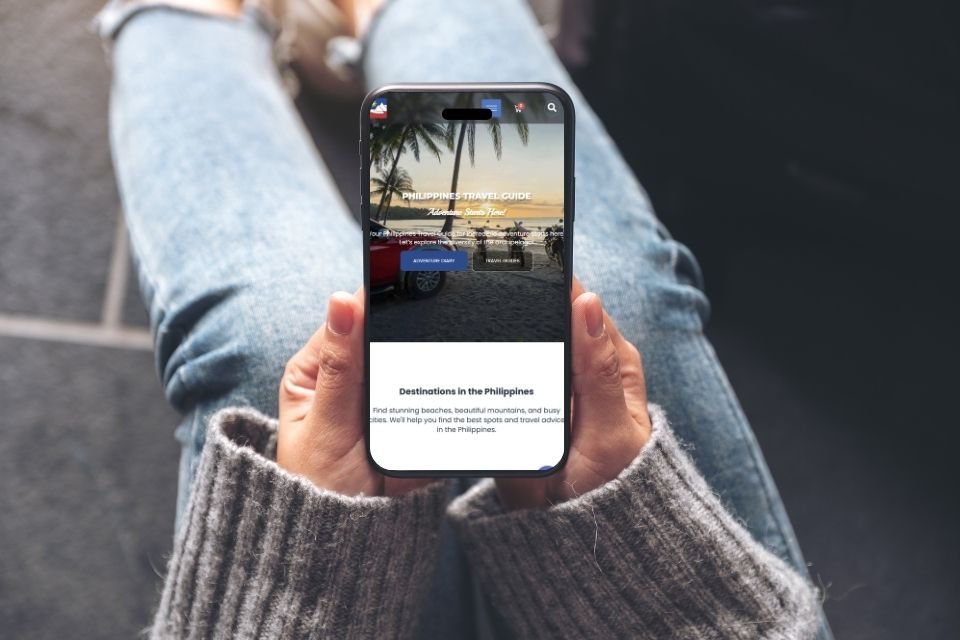
Final Recommendations and Preparation Checklist
For most first-time visitors to the Philippines, Smart offers the best balance of coverage, price, and reliability. Purchase your SIM at the airport immediately after arrival, register with your passport, and activate a data plan that matches your trip duration. With these tips, you’ll stay connected throughout your Philippine adventure without breaking the bank.
Pre-Trip Preparation Checklist:
- ✓ Check if your phone is unlocked for international SIM cards
- ✓ Verify eSIM compatibility if going the eSIM route
- ✓ Bring your passport and have hotel details ready
- ✓ Download network apps (GigaLife, GlobeOne) before departure
- ✓ Have return flight booking confirmation accessible
- ✓ Bring small Philippine peso notes (₱100, ₱500) for immediate SIM purchase
- ✓ Screenshot this guide for offline reference
- ✓ Enable dual SIM if using eSIM + home SIM
- ✓ Disable data roaming on your home SIM to avoid charges
- ✓ Download Google Maps offline maps for Manila and your first destination
Upon Arrival Checklist:
- ✓ Purchase a SIM at an airport kiosk or a convenience store
- ✓ Provide passport, hotel details, and return ticket for registration
- ✓ Wait for registration confirmation SMS (5-10 minutes)
- ✓ Load initial credit or activate data plan
- ✓ Test data connection before leaving the airport
- ✓ Send a test message to verify SMS functionality
- ✓ Save customer service numbers in your phone
- ✓ Note your new Philippine number for reference
- ✓ Download GCash/Maya if planning a longer stay
- ✓ Keep a photo of your SIM card packaging with the PUK code (needed to unlock your SIM if you enter the wrong PIN three times).
Budgeting Guide for SIM Card Costs:
Short trip (3-5 days): ₱300-400 ($5-7)
- SIM card: ₱50-100
- Data plan: ₱249-299
Medium trip (1-2 weeks): ₱500-1,000 ($9-17)
- SIM card: ₱50-100
- Data plan: ₱499-999
- Additional reload: ₱100-200
Long trip (3-4 weeks): ₱800-2,500 ($14-43)
- SIM card: ₱50-100
- Data plan: ₱749-2,000
- Additional reload: ₱100-300
These costs are minimal compared to international roaming charges, which can reach $10-15 per day with limited data.
Staying Connected During Your Philippine Adventure
Having reliable mobile connectivity enhances your travel experience significantly.
Whether you’re navigating through Metro Manila’s busy streets, coordinating island-hopping tours in El Nido, or sharing stunning photos from your adventures, a local SIM card keeps you connected affordably.
The Philippines is becoming increasingly connected, with network infrastructure improving yearly. Whether you choose Smart for comprehensive coverage, Globe for maximum data allowances, or DITO for budget savings, you’ll find excellent value compared to international roaming.
For more travel tips, destination guides, and practical advice for exploring the Philippines, visit Philippines Travel Guides. Safe travels!
Latest Update: October 2025. Mobile plans and prices change frequently—always verify current rates with your network provider when purchasing.
Follows us on Facebook
Tips and Tricks
- Bringing Regulated Items
- Transport Options
- Popular Destinations
- Religion in the Philippines
Travel Adventures Diary
- Adventure Tours in Manila
- Adventure Tours on Bantayan Island
- Adventure Tours in Cebu
- Adventure Tours on the Island of Negros
- Adventure Tours Siquijor
- Adventure Tours in Guimaras
- Adventure Tours Gigantes
- Adventure Tours in Metro Manila
- Adventure Tours Puerto Princesa
- Adventure Tours in El Nido
- Adventure Tours in El Nido and Puerto Princesa
- Adventure Tours Baguio City
- Adventure Tours Sagada
- Adventure Tours Buscalan
- Adventure Tours Banaue
- Adventure Tours Pangasinan
- Adventure Tours Hundred Islands
- Adventure Tours in Metro Manila
- Adventure Tours in Leyte
- The Bamboo Paraiso Beach Resort
- Best Tour in Pangasinan
PHILIPPINES
More Travel Tips
Want to read more? Check out these related stories.
Explore the great and natural beauty of Puerto Princesa. It can be visited all year round.
The town of Sagada is famous for its own unique appeal and its local culture.
Manila is the capital city of the Philippines and is rich in history and culture.
The Manila International Airport NAIA is the international gateway for most visitors entering the Philippines.
